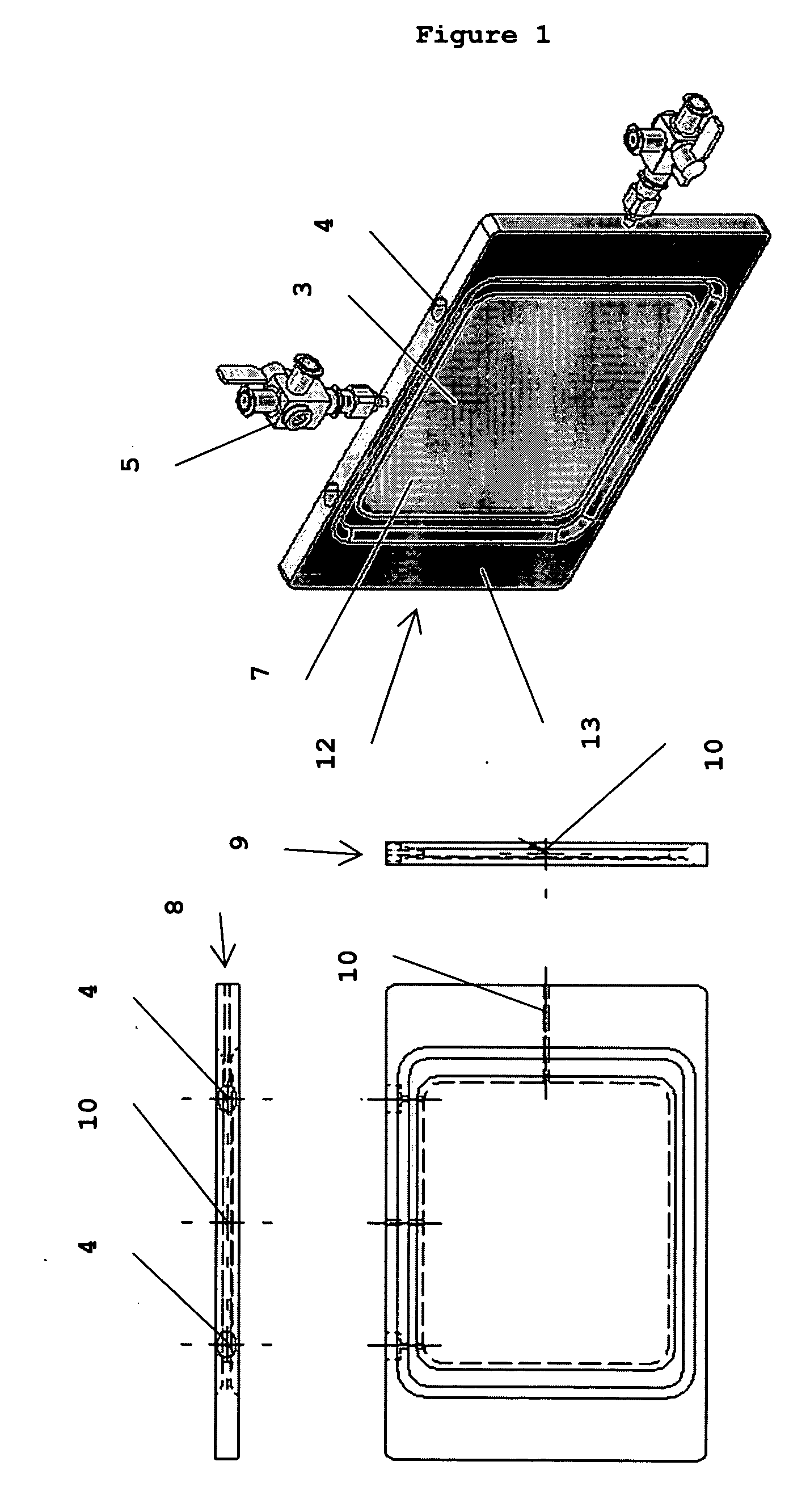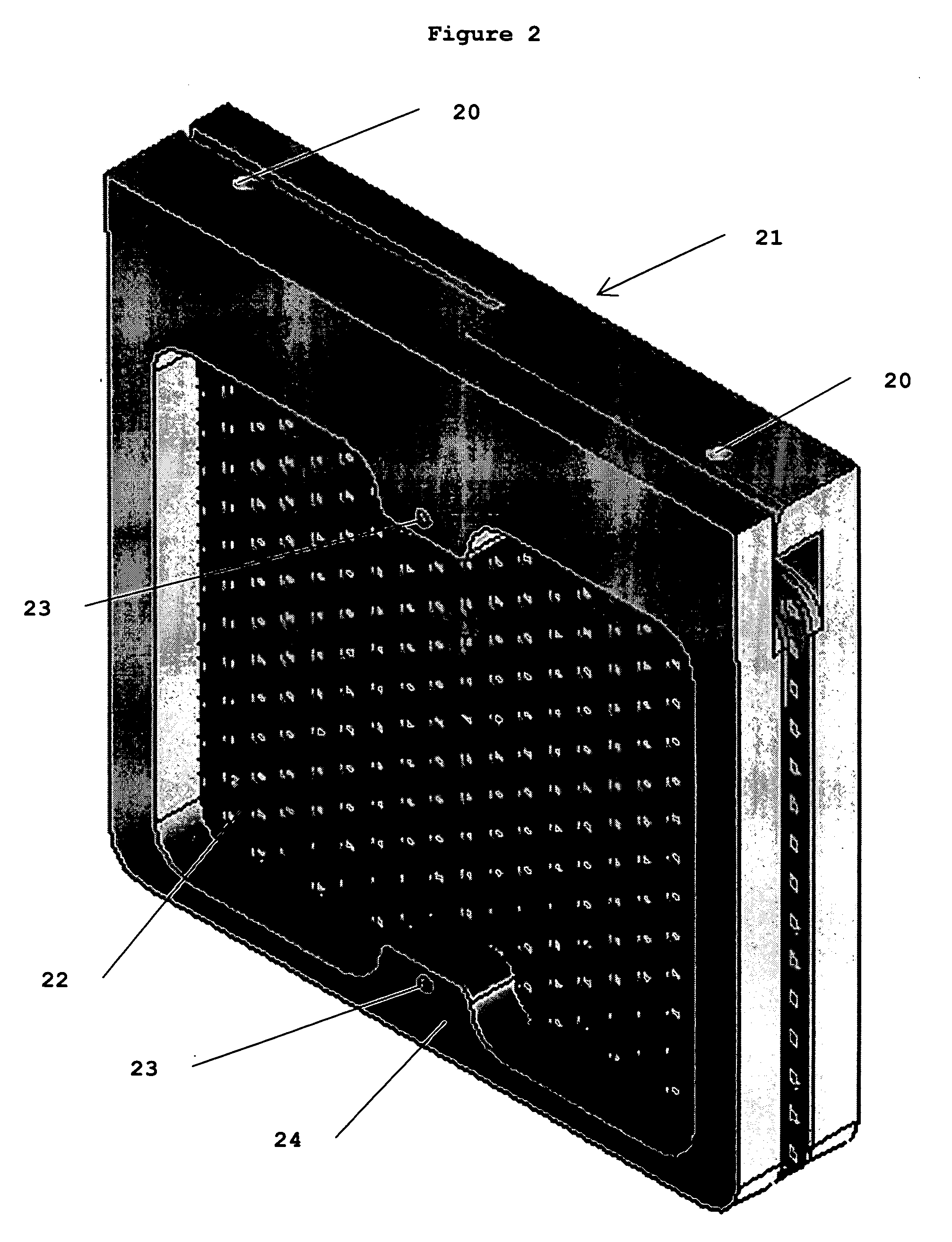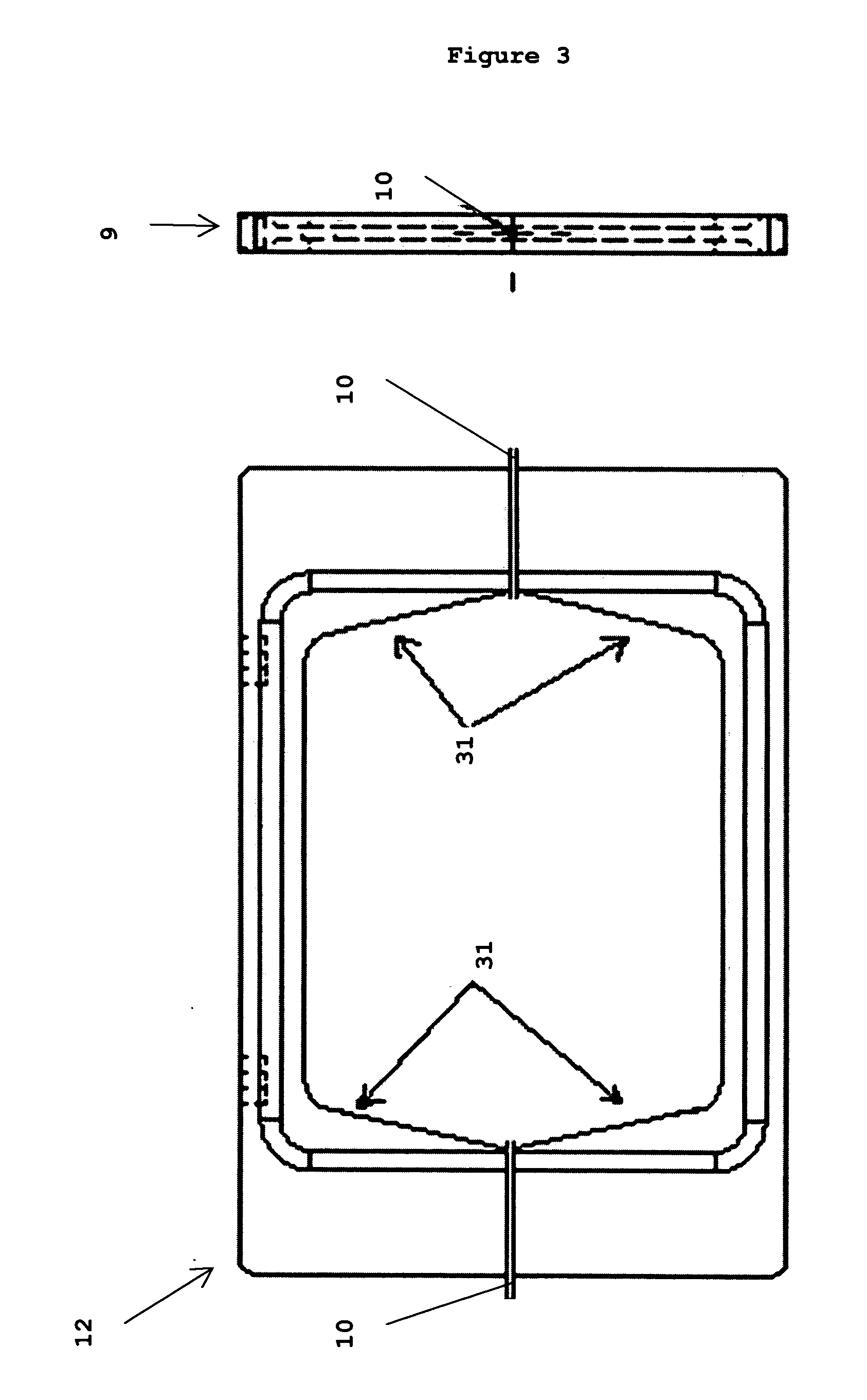Apparatus for growing cells under variable hydrostatic pressures
a technology of hydrostatic pressure and apparatus, which is applied in the direction of biochemical apparatus and processes, specific use of bioreactors/fermenters, and after-treatment of biomass, etc. it can solve the problems of inability to simulate the in vivo conditions experienced by growing solid tumor cells, elevated pressures alter the genetic expression of tumor cells, and cells grown using the traditional 2-d approach may not reflect the behavior of their in vivo counterparts
- Summary
- Abstract
- Description
- Claims
- Application Information
AI Technical Summary
Benefits of technology
Problems solved by technology
Method used
Image
Examples
experimental study details
[0065] Five studies are presented to facilitate the description and understanding of the invention. They are: 1. Human Osteosarcoma IFP Measurements to identify the pressure range for the subsequent in vitro cell culture studies; 2. Cassette-HPA Characterization Studies to investigate the performance of and identify operational parameters for the cassette-HPA assembly; 3. Cell Proliferation Study to investigate the influence of hydrostatic pressure on tumor cell line growth; 4. Cell Cycle Analysis Study to investigate the biological basis for the proliferation study finding; and 5. Influence of Hydrostatic Pressure on Tumor Cell Response to Chemotherapy to illustrate the clinical importance of including hydrostatic pressure as a cell culture condition when studying drug-tumor cell interaction.
Materials & Methods
Experiment 1. Human Osteosarcoma IFP Measurements
[0066] The human osteosarcoma study data presented herein were collected by retrospective review of patient records appro...
experiment 2
Characterization
[0075] The HPA design reduces the exposed membrane surface area of the cassette and may reduce the trans-membrane gas exchange of the cells with the incubator atmosphere. The influence of the HPA on cell population was studied using three experiments. The population change of the U2OS and SaOS2 cell lines grown at 0 mmHg within T75 flasks, cassettes alone, and cassettes with the HPA were first compared to confirm that Osteosarcoma cells would, in fact, grow within the cassette assembly and to determine the study duration time for future studies. The U2OS and SaOS2 cells were allowed to incubate for 168 and 144 hours after pressurization, respectively without media change. Retrieval viable cell counts for the U2OS were obtained at 48, 96 and 168 hours and at 24, 72 and 144 hours for the SaOS2. The criterion for selecting the duration was that time when the cell count approached a plateau, i.e. before confluence. Continuing a study beyond this point would result in cel...
experiment 1
arcoma IFP Measurements
[0087] IFP measured in the central region of 15 histologically confirmed, high-grade osteosarcoma tumors was 35.9±16.2 mmHg (mean±std. dev.). IFP in normal muscle adjacent to the OS tumors, measured in 15 patients, was 5.3±4.4 mmHg (mean±std. dev.). IFP in normal bone, obtained from 6 patients, was 11.8±10.4 mmHg. Tumor IFP was higher than IFP measured in normal bone (p<0.003) and adjacent muscle (p<0.001), respectively. The mean arterial pressure in the patient group was 74.6±10.5 mmHg.
[0088] The patient population included 7 males and 6 females whose average age was 20.5±14 years old. Tumor locations were 2 humeri, 4 tibias, 5 femurs, 1 sacrum, and 1 pubis; all were extra-compartmental.
[0089] Representative pressures of 0, 20, and 50 mmHg were selected to bracket the spectrum of mean pressures seen clinically; or within the central region and gradient pressure region of OS tumors. These were applied to the pressurized cell culture system.
[0090] Experiment...
PUM
| Property | Measurement | Unit |
|---|---|---|
| pressure | aaaaa | aaaaa |
| static pressure | aaaaa | aaaaa |
| pressures | aaaaa | aaaaa |
Abstract
Description
Claims
Application Information
 Login to View More
Login to View More - R&D
- Intellectual Property
- Life Sciences
- Materials
- Tech Scout
- Unparalleled Data Quality
- Higher Quality Content
- 60% Fewer Hallucinations
Browse by: Latest US Patents, China's latest patents, Technical Efficacy Thesaurus, Application Domain, Technology Topic, Popular Technical Reports.
© 2025 PatSnap. All rights reserved.Legal|Privacy policy|Modern Slavery Act Transparency Statement|Sitemap|About US| Contact US: help@patsnap.com



